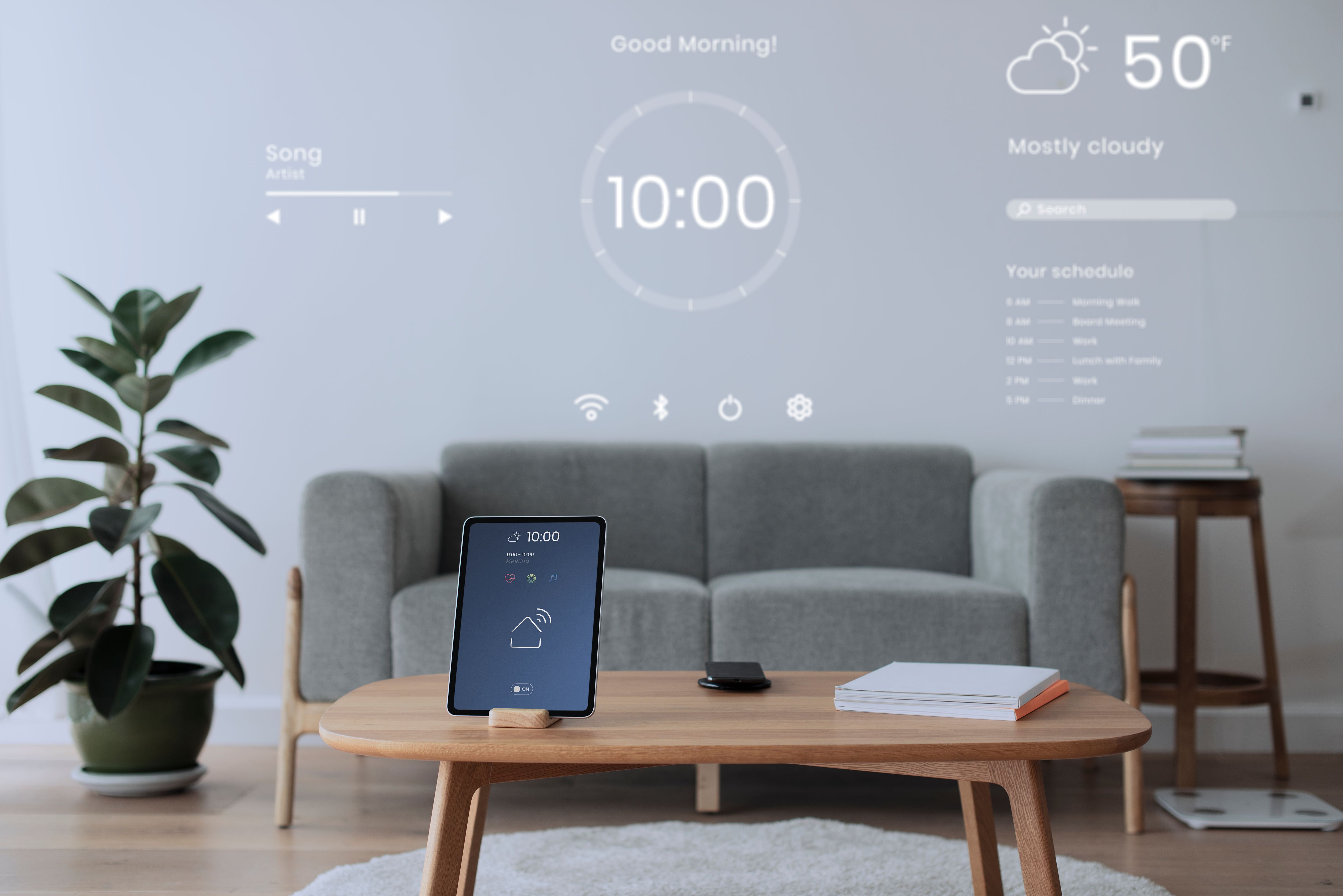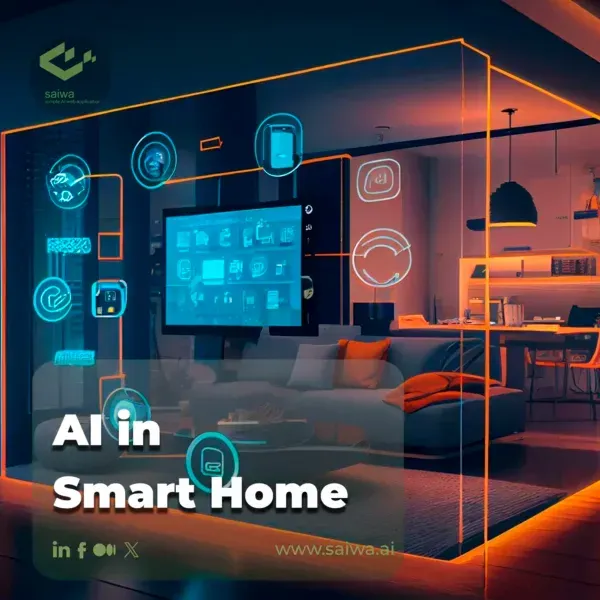Imagine a house that understands your preferences and automates everything from lighting to security. This isn't a dream.
Traditional home automation systems require manual programming for each device and scenario, creating strict routines that cannot adapt to changing occupant behaviors or preferences.
AI systems transform connected homes into adaptive environments that recognize resident patterns, anticipate needs, and optimise operations autonomously through machine learning algorithms.
This article explores how AI enables intelligent home automation, the technologies powering adaptive systems, and applications across security, energy management, and lifestyle enhancement.
Read Also: Pattern Recognition in AI: The Future of Data-Driven Decisions
What Is AI in Smart Home?
AI-powered smart homes integrate internet-connected devices with machine learning algorithms that analyze behavioral data to automate operations adaptively.
Unlike basic automation executing predetermined schedules, intelligent systems learn from occupant interactions, environmental sensors, and usage patterns to optimize device coordination dynamically. This cognitive capability elevates simple programmed responses into contextual awareness that anticipates needs before explicit commands.
The intelligence layer processes streams from thermostats, cameras, motion sensors, appliances, and wearables, identifying correlations between activities and optimal device states. Machine learning models refine predictions continuously based on feedback from resident adjustments, aligning automated actions closer to preferences over time.

How AI Enhances Today’s Smart Home Experience
Thanks to AI, people can interact with their homes more naturally and comfortably. Voice assistants, smart sensors and intelligent automation help homeowners to manage their daily tasks more easily, improve safety and optimize energy usage, all of which supports their overall wellbeing. Below are some of the main characteristics of modern, AI-powered smart home systems:
Intelligent Device Control
AI allows homeowners to control their devices in a more natural way. Voice assistants can interpret everyday language and understand context, allowing them to automate multiple tasks at once. This creates a smoother, more intuitive interaction with home technology.
AI can understand natural voice commands, regardless of the exact phrasing.
- Recognizes context like room location or preferred settings.
- Adjusts lights, temperature, and appliances automatically.
- Executes multi-device routines such as “movie time.”
- Learns user preferences to improve accuracy over time.
Device Integration and Automation
AI connects multiple smart devices into a unified system that works together seamlessly. This integration allows homeowners to automate tasks, simplify routines, and enjoy a more coordinated home environment.
- Links lights, thermostats, security systems, and appliances.
- Runs customiszd routines triggered by a single command.
- Ensures devices communicate efficiently with each other.
- Reduces the need for manual adjustments throughout the day.
- Creates personalized environments for comfort and convenience.
Enhanced Home Security
AI-powered security systems provide more accurate and reliable protection. By analyzing patterns and recognizing familiar faces, these systems reduce false alarms and offer a safer living environment.
Uses facial recognition to identify residents and visitors.
- Detects unusual motion or behavior in real time.
- Sends alerts only for relevant or suspicious activity.
- Correlates sensor data to predict potential threats.
- Helps prevent break-ins through smarter surveillance.
Energy Optimization
AI helps homes use energy more efficiently by learning daily habits and adjusting settings automatically. This leads to lower costs and a more environmentally friendly household.
- Learn routines to optimize heating and cooling.
- Schedules appliances during off-peak electricity hours.
- Predicts energy use based on weather conditions.
- Manages solar power storage and distribution.
- Detects unusual energy spikes or inefficient appliances.
Health and Wellness Support
AI supports healthier and safer living by monitoring wellness indicators and providing timely alerts. It assists with medication reminders, fall detection, and identifying changes in daily behaviour.
Tracks medication adherence using smart sensors.
- Monitors mobility, sleep, and activity patterns.
- Detects falls and contacts emergency help automatically.
- Monitors air quality and environmental conditions.
- Identifies early signs of potential health issues.

Advantages and Technical Constraints
Benefits and challenges often arise together whenever new systems are introduced. Understanding both sides is essential for balanced decision-making and effective long-term planning.
Primary Benefits
AI-powered smart homes deliver substantial improvements over traditional automation:
- Adaptive Learning Capabilities: Systems continuously improve through reinforcement learning, automatically adjusting to lifestyle changes, seasonal patterns, and evolving household compositions without manual reprogramming.
- Proactive Anticipatory Responses: Predictive models enable homes to prepare environments before explicit requests, preheating rooms before wakeup times or adjusting lighting based on detected activities and time of day.
- Accessibility Improvements: Voice control and automated assistance support elderly independence and accommodate physical disabilities, enabling device management without manual interaction or complex interface navigation.
Implementation Obstacles
Deploying AI smart home systems faces several significant challenges:
Privacy and Data Security: Continuous monitoring generates sensitive behavioral data vulnerable to breaches or misuse. Systems require robust encryption, secure storage, and transparent data policies addressing legitimate privacy concerns.
Reliability Dependencies: Systems relying on cloud connectivity fail during internet outages, leaving homes without automation capabilities. Local processing alternatives add cost while potentially limiting advanced AI features requiring substantial computational resources.
Cybersecurity Vulnerabilities: Connected devices expand attack surfaces for malicious actors. Many consumers lack cybersecurity skills to properly secure networks, configure firewalls, or recognize compromised devices, leaving homes vulnerable to cyber-physical attacks.
Initial Investment Costs: Comprehensive smart home implementations require significant upfront expenses for devices, installation, and integration. Cost barriers particularly affect renters or budget-conscious households despite long-term energy savings and convenience benefits.
Real-World Uses of AI in Everyday Smart Homes
Artificial intelligence has quietly become an everyday part of life, playing a key role in many of the devices and systems people rely on at home. From automated comfort settings to intelligent cleaning tools, AI is making routine tasks easier, faster and more personalized. Here are some of the ways in which AI is already shaping smart home experiences:
Voice-Activated Home Assistants
AI voice assistants such as Amazon Alexa, Google Assistant respond to spoken requests and help manage daily tasks hands-free. Whether you want to play music, ask for the weather, these assistants understand natural language and gradually personalize their responses based on your habits.
Smart Security Cameras
Modern security cameras use AI to recognize common household activity and distinguish it from potential threats. They can tell the difference between a passing pet, a family member at the door, or an unfamiliar visitor, sending alerts only when something genuinely unusual or suspicious occurs.
Adaptive Smart Lighting
AI lighting systems adjust brightness, color, and timing according to your schedule and activities. They can brighten your space for morning routines, dim gradually in the evening, or shift tones to support relaxation, helping create the right mood throughout the day.
Smart Robotic Cleaners
AI-powered vacuum cleaners and mops map your home layout to optimize cleaning routes. As they learn the environment, they navigate around furniture more accurately and operate at the most convenient times, providing efficient cleaning with minimal interruption.
Connected Smart Refrigerators
AI-enabled fridges help manage kitchen tasks by tracking food inventory, suggesting meal ideas based on what’s inside. Many models also serve as multifunctional hubs, displaying calendars, photos, or playing media to keep households organized.
Conclusion
Smart homes powered by AI represent a major step forward from programmed automation to systems that can learn, predict and optimize residential operations on their own. Machine learning algorithms transform passive devices into coordinated systems that anticipate occupant needs, reduce energy waste and enhance security through contextual awareness, which is impossible with traditional automation.
AI-driven automation platforms such as Saiwa Fraime demonstrate that modern smart-home intelligence no longer depends solely on device-level rules, but on continuous perception of the environment through real-time computer-vision and sensor fusion. By leveraging modules such as object detection, pose estimation, and activity recognition, homes gain the ability to interpret human behaviour with far higher accuracy than traditional motion-based systems.
In practice, this means automation scenarios are triggered not merely by time-based routines, but by context-aware cues—for example recognizing whether a person is cooking, resting, exercising, or leaving the house. Multi-modal data processing enables the system to optimize energy usage dynamically, enforce adaptive security thresholds, and personalize environmental conditions without explicit user interaction.
Note: Some visuals on this blog post were generated using AI tools.

